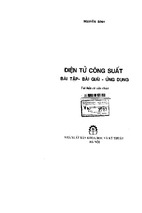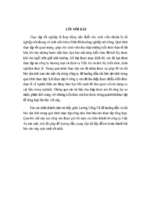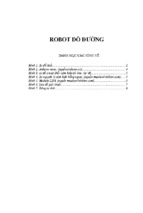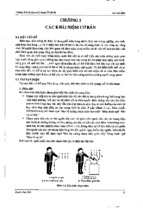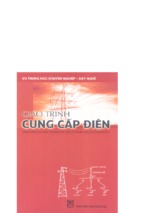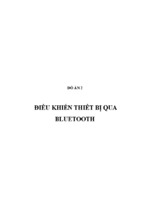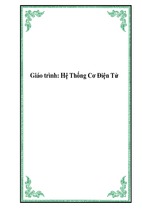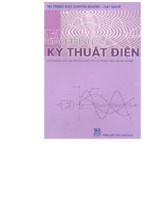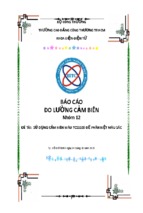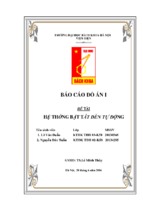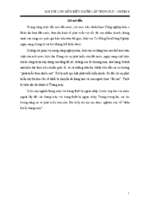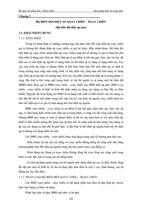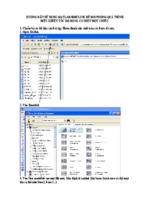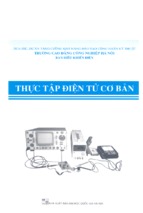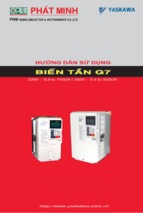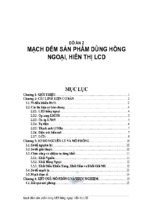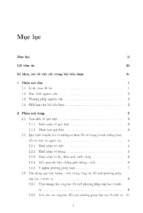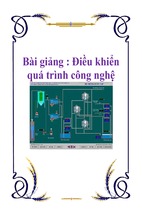Development of Induction Motor PWM IGBT Inverter with
DSP TMS320F28335
by
Fernando Jesus García Diaz
Submitted to the Department of Electrical Engineering, Electronics,
Computers and Systems
in partial fulfillment of the requirements for the degree of
Master Course in Electrical Energy Conversion and Power Systems
at the
UNIVERSIDAD DE OVIEDO
July 2015
Universidad de Oviedo 2015. All rights reserved.
Author . . . . . . . . . . . . . . . . . . . . . . . . . . . . . . . . . . . . . . . . . . . . . . . . .
Certified by. . . . . . . . . . . . . . . . . . . . . . . . . . . . . . . . . . . . . . . . . . . . . .
Juan Díaz González
Associate Professor
Thesis Supervisor
Development of Induction Motor PWM IGBT Inverter with DSP TMS320F28335
2
Development of Induction Motor PWM IGBT Inverter with DSP TMS320F28335
Development of Induction Motor PWM IGBT Inverter with
DSP TMS320F28335
by
Fernando Jesus García Diaz
Submitted to the Department of Electrical Engineering, Electronics,
Computers and Systems
on July 16 2015, in partial fulfillment of the
requirements for the degree of
Master Course in Electrical Energy Conversion and Power Systems
Abstract
In this thesis the design of a three phase inverter in open loop was
done, intended to be used as a variable speed drive for an induction
motor. First the motor parameters were obtained through the no load
and blocked rotor tests, with this parameters a simulation is carried
out using Psim. Then a driver for the IGBTs was designed and
assembled together with the IGBTs, heatsink, diode bridge, and
busbar. The control was made with the DSP TMS320F28335 using
sine PWM modulation. The system was finally tried with a real
motor, analyzing currents and voltages.
Juan Díaz González
Associate Professor
Thesis Supervisor
3
Development of Induction Motor PWM IGBT Inverter with DSP TMS320F28335
Acknowledgments
Studying a Master Course whilst working full time is not an easy task. This thesis
and the complete course would not have been possible without my family’s
encouragement, understanding, and support.
To my professors for their patience and for all time spent with me in the tuition
hours, enabling me to obtain a new and greater knowledge, very important in my
life and work.
To my work colleagues and bosses for giving me the flexibility to attend the
practical classes and laboratories.
To my English teacher, for giving me the basis to talk and understand an essential
language in Engineering.
4
Development of Induction Motor PWM IGBT Inverter with DSP TMS320F28335
Contents
CHAPTER 1 Introduction .............................................................................................................. 9
1.1 VSD Markets .................................................................................................................................. 9
1.2 Energy Efficiency ......................................................................................................................... 10
1C VSD Typical Features .................................................................................................................... 11
CHAPTER II Induction motor equivalent circuit ................................................................... 13
2.1 Datasheet .................................................................................................................................... 13
2.2 Equivalent Circuit ........................................................................................................................ 14
2.3 Motor Simulation ........................................................................................................................ 17
CHAPTER III Inverter development.......................................................................................... 19
3.1 Inverter Power Scheme ............................................................................................................... 19
3.1 Inverter Thermal calculations ..................................................................................................... 22
3.2 Busbar.......................................................................................................................................... 29
3.3 IGBT Driver .................................................................................................................................. 30
CHAPTER IV Control Circuit...................................................................................................... 32
4.1 Modulation .................................................................................................................................. 32
4.2 PWM Module ............................................................................................................................. 33
4.3 Interrupts .................................................................................................................................... 36
4.4 Duty Variation ............................................................................................................................ 39
CHAPTER V System testing ...................................................................................................... 41
5.1 Conclusions.................................................................................................................................. 44
Bibliography .................................................................................................................................. 45
APPENDIX I Bill of Materials and Budget............................................................................... 45
5
Development of Induction Motor PWM IGBT Inverter with DSP TMS320F28335
List of figures
Figure 1 Units Sold ............................................................................................................................ 10
Figure 2 Comparison of the power consumed for a pump with an AC drive and with throttle
control, 123KW motor and a pump with a flow rate of 1100 m3/h. PumpSave 5.3, worksheet, ABB
........................................................................................................................................................... 10
Figure 3 Comparison of the power consumed for a fan with an AC drive and with Outlet damper,
36KW motor and a fan with air flow of 10m3/s. FanSave5.3, worksheet ABB................................. 11
Figure 4 Induction Motor Equivalent Circuit ..................................................................................... 14
Figure 5 Resistance Measurement .................................................................................................... 15
Figure 6 Motor Simulation Schematic ............................................................................................... 17
Figure 7 Motor Speed and Current ................................................................................................... 18
Figure 8 Detail of the motor steady state current per phase ........................................................... 18
Figure 9 Electrical Connections, Power Circuit ................................................................................. 19
Figure 10 Rectifier DDB6U205N12 .................................................................................................... 20
Figure 11 2MBI200HH-120-50 IGBT Module..................................................................................... 20
Figure 12 Simulation Schemmatic ..................................................................................................... 21
Figure 13 PWM Logic Block ............................................................................................................... 21
Figure 14 Speed Curve ...................................................................................................................... 21
Figure 15 Ic and Vce of T2 ................................................................................................................. 22
Figure 16 DC bus voltage ripple ........................................................................................................ 22
Figure 17 IPOSIM Output Curves ...................................................................................................... 24
Figure 18 Clearance and Creepage.................................................................................................... 25
Figure 19 Busbar Section Cut ............................................................................................................ 26
Figure 20 Busbar C1........................................................................................................................... 26
Figure 21 E2 Mount ........................................................................................................................... 27
Figure 22 C1 Mount ........................................................................................................................... 28
Figure 23 Snubber Capacitors on the C1 E2 terminals ...................................................................... 29
Figure 24 HPCL-3120 Internal block diagram .................................................................................... 30
Figure 25 Driver ................................................................................................................................. 31
Figure 26 Sine PWM for one output ................................................................................................. 33
Figure 27 Switching Sequence for all the IGBTs ................................................................................ 33
Figure 28 Triangular Carrier and PWM signals .................................................................................. 35
Figure 29 DSP PWM output............................................................................................................... 38
Figure 30 Output Signals Filtered ...................................................................................................... 38
Figure 31 Dead Time Measurement.................................................................................................. 39
Figure 32 PWM1A and PWM2A for 20Hz.......................................................................................... 39
Figure 33 PWM1A and PWM2A for 40Hz.......................................................................................... 40
Figure 34 Heatsink Mount ................................................................................................................. 41
Figure 35 Rectifier and Inverter ........................................................................................................ 41
Figure 36 Induction Motor used for Testing ..................................................................................... 42
6
Development of Induction Motor PWM IGBT Inverter with DSP TMS320F28335
Figure 37 Motor phase currents ....................................................................................................... 42
Figure 38 Vce of IGBT1 ...................................................................................................................... 43
Figure 39 TMS320F28335 Experimenter Kit ..................................................................................... 43
7
Development of Induction Motor PWM IGBT Inverter with DSP TMS320F28335
List of Tables
Table 1 Motor Datasheet .................................................................................................................. 13
Table 2 Motor Test ............................................................................................................................ 14
Table 3 Input Parameters .................................................................................................................. 23
Table 4 Input Parameters .................................................................................................................. 23
Table 5 Output Values ....................................................................................................................... 23
Table 6 Budget .................................................................................................................................. 46
8
Development of Induction Motor PWM IGBT Inverter with DSP TMS320F28335
CHAPTER 1
Introduction
Electric motors are widely used, in the industry they consume about 70% of the electrical energy
[2]. They provide a way to transform electrical energy into mechanical energy, adding motion or
torque to the mechanical parts of machinery, like saws or lathes, with having not only the ability to
start and stop when is needed, it also add variable speed to an industrial process. The use a
variable speed drives (VSD) is very common due to its advantages in energy savings and
controllability. A machine operating at variable speed, inside a production process, can regulate its
speed of operation according to the productivity required in every moment. Pumps or fans are the
most common applications used with induction motors, if the liquid or air flow needs to be
regulated, using mechanical ways it will suppose more power consumption and difficulty of use.
Ventilation systems, for example, used in tunnels or car parking, use variable speed to evacuate
the carbon monoxide produced by the internal combustion engine of the vehicles, the control
system can regulate the fan speed according to the gases accumulation. Another important
advantage of the use of VSD is the soft start function, which reduce the current stress in the motor
windings, having a direct impact in the maintenance cost of the facility.
The most common motor type is the induction motor, due to its good features as low cost, easy
maintenance wide power range etc. It gets its name because the way it takes the rotor currents,
that is by induction, no external current is injected directly to it. The fundamentals of speed
regulation came from the fact that rotation speed is proportional to the electric system frequency,
in the stator windings a rotating magnetic field is created by the circulation of a three phase
sinusoidal current. This machine type is also called asynchronous machine because rotor speed is
slightly less than the synchronous speed. The stator magnetomotive force rotates at 2/P
revolutions per period, being P the number of poles.
With the improvement of control electronics, complicated algorithms can be implemented using a
DSC or ARM, the electric machines control leans in this new electronics, having the possibility to
implement high performance controllers and measure some parameters which need a real time
machine. The induction machine reference frames theory is the base for those control algorithms,
providing complex variables easier to work with and relating them with the output parameters we
need to control.
1.1 VSD Markets
The interest for companies to design and improve VSDs is clear due to the numbers and statistics
obtained from the market analysis, the growing expected is quantified in the report "Variable
Frequency/Speed Drives (VFD/VSD) Market, By AC And DC Drive, Low, Medium And High Voltage
Range Type, And Application (Pump, Fan, Compressor) - Global Market Trends and Forecast To
2017 " [10], there states a grow of 6440 million $ from 2012 to 2017. The technical justification for
this growth can be found in the potential of this technology in energy savings, as many
publications coincide[2][3][5]. The market distribution in Europe is leaded by Germany with the
42% of the total units sold, followed by U.K. with the 10% and Portugal and Spain with the 7%[3].
9
Development of Induction Motor PWM IGBT Inverter with DSP TMS320F28335
Units Sold
1600000
1400000
1400000
1200000
1000000
800000
600000
400000
227000
200000
115000
42000
15000
30;70
70;130 130;500
9000
0
0.75;4
4;10
10;30
Power Range
Figure 1 Units Sold
1.2 Energy Efficiency
The load types identified as having the more potential in energy savings are the ones related with
fluid control, specifically pumps, fans and compressors [3], other technologies with less potential
like machine tools, conveyors and lifts can also take some advantages of the use of VSDs in energy
savings.
Figure 2 Comparison of the power consumed for a pump with an AC drive and with throttle control, 123KW
motor and a pump with a flow rate of 1100 m3/h. PumpSave 5.3, worksheet, ABB
For the case of centrifugal pumps without lift, the consumed power is proportional to the cube of
speed, (cube power law) as can be observed in figure 2. Throttle control is an old technique used
to regulate the flow of a liquid on a pipe by the use of a mechanical valve, obstructing the liquid on
its way, still used nowadays but step by step been replaced by a VSD technology, in figure 2 can be
seen the inefficiency of this method in comparison with an AC drive.
10
Development of Induction Motor PWM IGBT Inverter with DSP TMS320F28335
In case of fans occurs something similar, they obey cube power law and the speed reduction lead
to less power consumption, if the motor is spinning with no speed regulation and the air flow is
regulated with an outlet damper, the system is not efficient, as can be seen in figure 3.
Figure 3 Comparison of the power consumed for a fan with an AC drive and with Outlet damper, 36KW
motor and a fan with air flow of 10m3/s. FanSave5.3, worksheet ABB.
For compressors the energy savings are not as high as pump or fans because, rotary screw and
pistons compressors are constant toque loads [3], but some sources talk about a 20% of energy
savings for compressors with integral speed control [3]. In the case of the compressors used in
refrigeration, with the use of a VSD the typical on/off cycles can be avoided, leading to a 25% of
energy savings [3].
For machine tools, especially those which accumulate high amounts of kinetic energy, it's
interesting to add to the VSD some mechanism of energy recovering to send back to the grid a
part of this kinetic energy, similar case occurs with lifts when the motor needs to brake for lifting
low loads or descending heavy loads.
1.3 VSD Typical Features
The commercial VSD offers the option to adjust some parameters to increase the functionality of
the system and better adaptation of the drive with the industrial process involved. Here are
summarized the most important features [4].
-
Logic inputs: For controlling some basic functions of the system from a push button or
relay, like start, stop, reset or turning direction.
Analog input: For speed regulation from a potentiometer, the typical range is from 0 to
10V.
±Speed: It's possible to vary the speed with the logic inputs in small steps, this is a more
precise way to adjust speed in comparison to the potentiometer use, but slower.
Communication busses: the most typical are Ethernet, TCP/IP, Modbus, Profibus, CAN,
those communication systems are used to connect the VSD with a PLC or microcontroller
to adjust all the parameters or passing information to databases to make a register of all
11
Development of Induction Motor PWM IGBT Inverter with DSP TMS320F28335
-
-
-
-
statistics, when the motor start, the estimated energy consumption, if there was some
fault, at what time it occurs, etc.
Controllable acceleration or deceleration ramps: Defined by the user to assure always the
same acceleration for some machine, it's a way to avoid sudden jolting when attached to
the motor is some sensitive mechanical part (i.e. mechanical stairs, elevators etc.)
Automatic adaptation of acceleration or deceleration ramps: It's an improvement of the
last feature, this time considering the load to adjust the acceleration.
Preset Speeds: Inside the memory of the VSD can be stored up to 7 speeds (Altivar 21),
making the motor spinning at this exact value, when switching a button, or when
requested via communication bus. It's possible also to make speed steps using the 7
memory positions.
Auto tuning: For speed regulation, the motor parameters affects the PID or PI control
actions but the electrical facility operator usually doesn't know that parameters, typically
obtained from the no load test and blocked rotor test, to solve this problems many VSD's
incorporate an auto tuning function.
Drive thermal protection: A PTC sensor is located on the heatsink of the IGBT's power
inverter, the internal microcontroller monitors all time this temperature and in case of an
abnormal increase, to prevent major damages it can take some actions like system shut
down or alarm deploy.
Automatic restart: Function for restarting the system after a failure when the condition
which trigger that failure disappear.
External Fault: function for locking the system by an external signal related to an external
failure.
IGBT Testing: Every time the system is started, this function is run for detecting a short
circuit on the IGBT's
Current Limit: The drive can measure the current consumption and comparing it with the
nominal current in order to detect an over current event.
DC Injection Stop: When the machine operates loads with important inertia and need to
be stopped, DC injection is used as a brake system.
12
Development of Induction Motor PWM IGBT Inverter with DSP TMS320F28335
CHAPTER II
Induction motor equivalent circuit
2.1 Datasheet
Induction motors datasheets normally shows a few parameters needed for the basic calculations
of the motor application like torque, speed or currents. If the motor is needed for pump or fan
applications with these data it will be enough, but if the task the engineers have ahead is the
design of a VSD, one of the first things needed are the complete list of the equivalent parameters,
not accessible in the catalogs or datasheets.
For this project a 3ph IE2 induction motor is used, the model selected is the M3AA225SMA from
the manufacturer ABB. The plate specifications are:
Delta nominal voltage: 400V
Wye nominal Voltage: 690V
Frequency: 50Hz
More parameters are found on the October 2013 Catalog "Low voltage Process performance
motors according to EU MEPS".
M3AA225SMA
37
M3AA 225 SMA
3GAA 222 031Product code
••G
1479
Speed
Efficiency IEC 60034-2-1; 2007
Output
Motor type
Load 100%
Load 75%
Load 50%
Power factor
Current
In
Is
Torque
Tn
Ti
tb
Moment of
inertia
Weight
Kw
r/min
93,4
93,9
93,4
0,84
cosϕ
68
71
A
In
238
2,6
2,9
Nm
Tn
Tn
J=1/4 GD^2
kgm^2
Kg
0,356
240
Table 1 Motor Datasheet
13
Development of Induction Motor PWM IGBT Inverter with DSP TMS320F28335
To find the equivalent parameters three tests are normally made, the DC test, the no load test and
the blocked rotor test, for the case of the selected motor, a complete test report is found in the
manufacturer website.
No Load Test
Unl
401
V
Inl
25.9
A
Pnl
840
W
Nnl
1500
RPM
cos_phi
0.05
Blocked Rotor Test
Ulr
71.4
V
Ilr
61.6
A
Plr
2770
W
cos_phi
0.36
R1t
DC Test
0.10820
Ω
Table 2 Motor Test
2.2 Equivalent Circuit
The per phase equivalent circuit is shown in figure 4. In this circuit R1 and X1 represents the stator
resistance and leakage reactance, R2 and X2 represent the rotor resistance and leakage reactance,
all of them referred to the stator. The term Rc represent the core losses Xm the magnetizing
reactance and s is the slip. The motor output power is function of the slip s.
Figure 4 Induction Motor Equivalent Circuit
14
Development of Induction Motor PWM IGBT Inverter with DSP TMS320F28335
R1 and R2 Calculation
In the DC test the resistance between phases is measured with an ohmmeter, with the windings
connected in delta:
Figure 5 Resistance Measurement
The resistance pre phase R1is obtained:
Now with the blocked rotor voltage and current the blocked rotor impedance is obtained
Using the cos phi in blocked rotor the blocked rotor resistance is obtained:
During the blocked rotor test the magnetizing branch disappears and only R1m, X1, X2 and Rlr
remains:
With the Active power and cos phi, the apparent power during test is obtained:
Considering NEMA codes:
Having the cos phi, the angle phi is obtained:
15
Development of Induction Motor PWM IGBT Inverter with DSP TMS320F28335
And then, blocked rotor reactance is:
With blocked rotor reactance, stator and rotor reactances are obtained:
Now with the no load parameters, first the no load reactance is obtained:
In the no load test, only R1, and X1 and Xm are present in the equivalent circuit.
With X1 and X2 obtained previously, L1 and L2 are easily obtained:
Same with magnetizing inductance Lm
The rotating speed is calculated from the grid frequency and the pole pairs:
Now the slip is:
16
Development of Induction Motor PWM IGBT Inverter with DSP TMS320F28335
and the Rload:
2.3 Motor Simulation
With all the parameters obtained in the last section, it's possible to build a motor model similar to
the real one, using one of the multiples software available for that purpose. In this case, the
software Psim was chosen, due to its simplicity to use, aspect taken into account for the project
execution time. The schematic is shown in figure 6, where the block IM represents the motor, in
this motor block, the 3 phases are connected in wye. Attached to the motor shaft are 2 sensors
one for measure the speed and the other for measuring the torque. The final element connected
to the shaft is a mechanical load, which value corresponds with the motor nominal torque.
Figure 6 Motor Simulation Schematic
The simulation output is shown in the next figure, where we can observe the speed curve, very
close to the nominal speed and the phase current. The phase current measured is around 60A but
this is the peak value, calculating the RMS value, is 42A. In the motor plate the phase current for a
wye connection is 39A, so the motor model is considered correct.
One important issue to consider is the start up current, in this case is 1200A peak to peak value,
and the duration is 0.15 seconds, care must be taken when defining the IGBT peak values, but
precisely one of the benefits to use a VSD is the reduction in the startup current peak.
17
500
0
Development of Induction Motor PWM IGBT Inverter with DSP TMS320F28335
-500
Ia
Speed
800
2000
600
1500
400
1000
200
0
500
-200
0
-400
-600
-500
0
0.1
0.2
Ia
0.3
0.4
0.5
Time (s)
800
Figure 7 Motor Speed and Current
600
400
200
Ia
0
50
-200
-400
-600
0
0.1
0.2
0.3
0.4
0.5
Time (s)
0
-50
0.26
0.27
0.28
Time (s)
0.29
Figure 8 Detail of the motor steady state current per phase
18
Development of Induction Motor PWM IGBT Inverter with DSP TMS320F28335
CHAPTER III
Inverter development
3.1 Inverter Power Scheme
In this chapter, the inverter hardware is described; the starting point of it is the electric grid. The
inverter is fed from the 3ph AC Electrical facility, due to the advantages in contrast with the single
phase AC system, like more power density, less voltage ripple, and less power fluctuation. To
connect a motor to the grid, a protection against short circuits and overloads is needed; also those
protections must have a detection of voltage lack in one of the phases, as is stated on the ITC BT
47[11]. The proposed scheme is shown in figure 9, the inverter is connected to the grid through a
magnetic breaker and a thermal relay. In this project is especially important this protection
because the inverter doesn't have thermal and overload protections as the commercial VSDs
models.
Figure 9 Electrical Connections, Power Circuit
The inverter is composed by several blocks, apart from the electric protections, the first blocks the
rectifier, used to transform the 3ph AC voltages into DC voltages and then a filter is attached to
minimize the voltage ripple and also serve as energy storage device for the voltage spike
minimization when the motor start and stop. The rectifier used is the model DDB6U205 N12 from
the manufacturer EUPEC, with a current rating of 200A and a repetitive reverse voltage of 1200V.
The internal diode bridge connections for this rectifier are shown in figure 10. The terminals
marked as 1,2,3 are the input from the AC grid and the ones marked as 4,5,6 are the DC output,
being 4 the positive terminal and 5, 6 the negative terminal. The output terminals are connected
to the IGBTs modules through a busbar.
19
Development of Induction Motor PWM IGBT Inverter with DSP TMS320F28335
Figure 10 Rectifier DDB6U205N12
The inverter itself is composed by three legs, each of them composed by 2 IGBTs, needed for
conform the three AC waveforms. For every leg the model 2MBI200HH-120-50 from the
manufacturer Fuji Electric is used. Their main features are, high speed switching, low inductance of
the module’s structure and the voltage current ratings i.e. [1200V / 200A]. The terminal C1
(collector of the first IGBT) is connected though the busbar to the terminal 4 (positive) of the
rectifier bridge, and the IGBT terminal E2 (emitter of the second IGBT) is connected to the terminal
6 of the rectifier bridge (negative)
Figure 11 2MBI200HH-120-50 IGBT Module
The six IGBTs and the rectifier were included in the simulation together with the motor model to
evaluate the current and voltage stress in the IGBTs, and also test a basic PWM modulation. An
ammeter is connected to the 3 motor branches and also the ammeter I8 and voltmeter VP10 are
used to see the IGBT collector current and Vce voltage. The mechanical load attached to the
mechanical shaft has a value similar to the nominal motor torque 200Nm. To filter the voltage
ripple from the rectifier, three 1000uF capacitors in series were used, with the initial voltage set to
zero in order to see the transient at the beginning because in the real circuit, the capacitors will
start to work discharged. The logic for implement the PWM modulation is shown in figure 13.
Basically it's composed but one triangular signal (VTRI1) acting as the carrier signal, and one 3ph
signal (VSIN32) acting as the modulating signal. The carrier has a frequency of 18250Hz,
corresponding to the microcontroller PWM triangular frequency (Chapter IV). The AC signal is
20
- Xem thêm -


